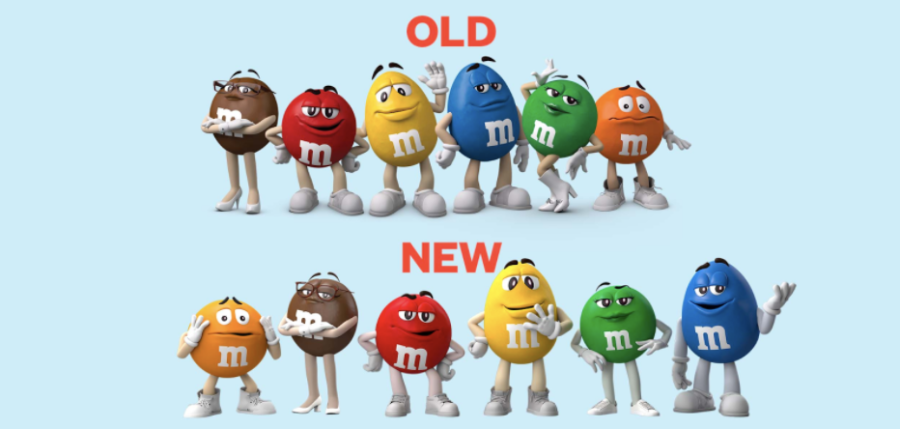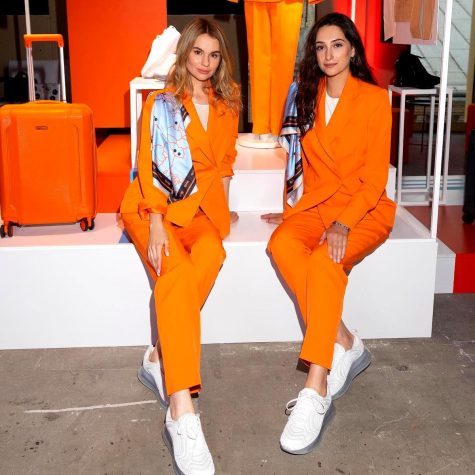M&M’s launched the new look of characters: woke or woke-washing?
March 11, 2022
The world is growing to become more and more inclusive to minorities and show an increased interest in social justice and equality surrounding issues such as race, gender, and sexual orientation; brands from all industries have come up with numerous clever ways to show their openness, tolerance, and exempt themselves from the accusations of discrimination. M&M’s, one of the most famous candies globally, is one of them. In January 2022, Mars, the candy maker, redesigned their characters with more modern looks, fitting them into a “more dynamic, progressive world,” and although their intentions were good, this new look caused controversy online.
The change is subtle when looking at the old and new characters side by side, however, the most dramatic one is the outfits of the two female characters, the green, and the brown M&Ms. Before the modification, the green M&M wore high-heeled boots and had the personality of witty, sexy, and always under the spotlight. Now, she wears a pair of white, comfy sneakers, reflecting her independence, confidence, and showing that efforts are more important than being pretty. The brown M&M is a “girl boss,” and Mars reduced the high-heeled pumps she used to wear to a more “professional height.” In addition to these changes, the skin color of the M&Ms was changed to a “more universal clearer hue, slightly tinted for each to match their shell”, and the three male characters’ shoes changed slightly.
While many appreciate the new look of M&M’s and their progressiveness, some found the idea of changing the world by redesigning the shoes of personified chocolates too idealistic and ridiculous. Others criticized that these changes neglected to represent some minorities, for example, none of the M&Ms identify themselves as LGBTQPAI+. Although the promotion of equality and reduction of stereotypes by international companies is significant to inspire consumers, many people feel that M&Ms are too pretentious, as the primary job of a chocolate company is to make sure their chocolates taste good.
Indeed, the phenomenon of “woke-washing,” referring to when a capital brand uses marketing to take a stance regarding social issues to make a profit, has caused backlash from many consumers today. Other than M&Ms, many other companies, such as Burger King, were also criticized for woke-washing. In 2019, during Mental Health Awareness Month, Burger King launched a series of “Real Meals” that recognized “No one is happy all the time. And it’s OK.” Examples of some of these meals are the Pissed Meal, Blue Meal, Salty Meal, YAAAS Meal, and DGAF Meal, jabbing at the Happy Meals sold by McDonald’s. Similar to the case of M&Ms, people considered the fast-food chain’s actions as woke-washing mainly because the food in the meals was the same as before, only with redesigned boxes serving as propaganda.
There has been an increase in awareness and reflection surrounding race, gender, sexuality, and other injustices in society since Gen-Z started a “woke” wave, sweeping through every community. The movement is well-intentioned, but when it seeps into the minutiae of everyone’s daily life, some people feel a little off; why have businesses gone so far as to ignore basic consumer needs to join the woke wave, and is it really necessary?
From my perspective, it is exciting to see brands and companies protesting for social justice and equality through updating brand images, however, there are certainly more substantial ways to announce their stance. For instance, having more minority employees in leadership positions, reducing gender wage gaps within their company, and giving employees paid family leaves. What people need is not a piece of “feminist chocolate” after work but a real improvement in their workspace and lives.







